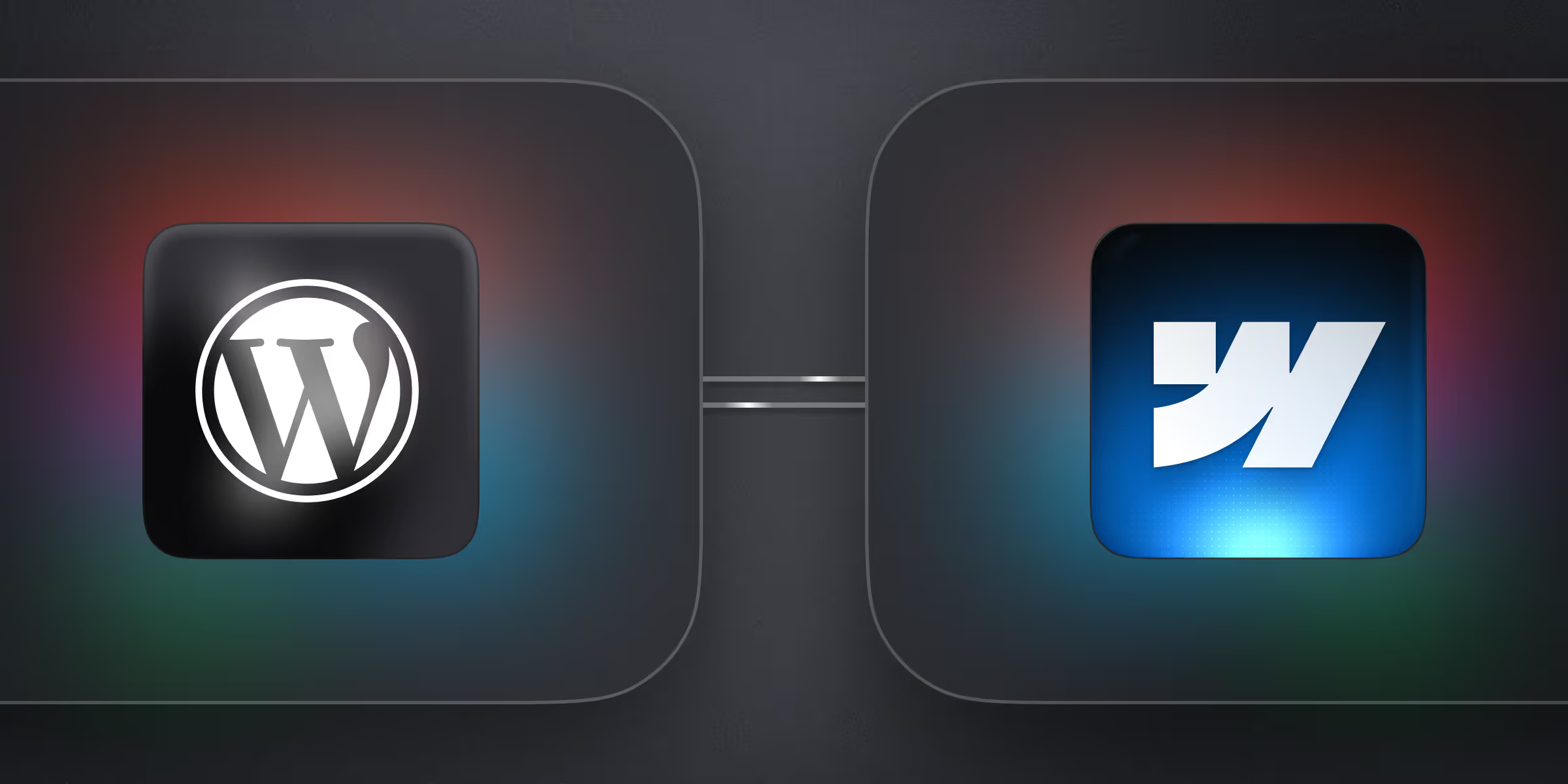Multilingual Website SEO Guide 2026
Learn how to do SEO for a multilingual website in 2026. Boost your global visibility, reach new audiences, and optimize for multiple languages with expert tips.

Actionable insights to improve SEO, speed, and conversions

In the year 2025, your website is more than just a digital brochure; it’s the core of your brand’s online strategy. Currently there are two major platforms dominating website management conversations. First is WordPress, the long-established content management system (CMS), and second is Webflow, the modern visual website builder disrupting the industry.
As businesses and creators aim for efficiency, scalability, and exceptional user experiences. The platform you choose can set the tone for your online success. In this guide, we will learn the top reasons to convert a WordPress site to a Webflow site.
WordPress has powered millions of sites since 2003, but its age brings growing challenges for modern site owners. Here are the most notable points:
A standard WordPress build depends on complex plugins and themes. The average WordPress site uses 10+ plugins, and each update comes with the potential for conflicts or site downtime.
As we know, this is the world’s most popular CMS, and WordPress is the most targeted for hackers. According to industry estimates, over 90% of all hacked CMS-powered WordPress sites have been hacked in recent years. Ian Laurie's analysis reveals that weak plugin or theme security accounted for the majority of breaches.
In 2025, website speed directly impacts search rankings and user retention. Unfortunately, WordPress can be sluggish out of the box, especially as sites scale.
While WordPress themes are abundant, truly unique designs often require custom CSS, JavaScript, or even PHP coding.
Webflow is a modern, all-in-one visual website builder and CMS empowering. With Webflow anyone from marketers to professional designers can craft fully responsive, custom websites.
What sets Webflow apart is its designer-first approach, combining no-code creation with developer-grade control, all hosted in a secure SaaS environment.
When comparing Webflow and WordPress, several fundamental differences highlight why each platform suits different types of users and project needs.
WordPress was launched in 2003, making it one of the oldest and most widely used content management systems.
Alternatively, Webflow was introduced in 2013 as a modern, design-first platform aimed at bridging the gap between designers and developers.
WordPress requires manual server hosting, which means users need to set up their own hosting environment, configure databases, and manage updates.
Webflow, on the other hand, is a fully hosted SaaS (Software as a Service) platform, which eliminates the need for third-party hosting or complex setup processes.
Designing with WordPress typically involves working with themes and writing custom code for flexibility. This can be limiting or complex for non-developers.
Webflow offers a visual drag-and-drop editor, allowing designers to build pixel-perfect layouts without writing code.
To extend functionality in WordPress, plugins are essential. From SEO to contact forms, almost every advanced feature depends on third-party plugins.
Webflow, however, comes with many built-in features, reducing dependency on external tools and improving performance and security.
While WordPress does have a content management system, it is often plugin-dependent and may require additional tools for custom content structures.
Webflow includes a native visual CMS, making it easier to design, add, and manage content visually without code.
Security in WordPress is user-managed, which means the user must handle updates, secure plugins, and manage backups. It’s also more vulnerable to vulnerabilities due to plugin use.
Webflow offers automated and managed security, including SSL, hosting updates, and backups by default.
Webflow has seen explosive growth, with adoption across startups, creative agencies, SaaS providers, e-commerce brands, and educational institutions. Major brands and award-winning designers embrace Webflow for its:
The days of being trapped by a cookie-cutter template or endless plugin hunting.
Webflow generates clean and semantic code that is tailored for each design, with no plugin and no excess scripts. Sites are hosted on Webflow’s globally distributed infrastructure, with a built-in content delivery network (CDN) and automatic image optimization.
Webflow’s fully managed platform means users enjoy:
Webflow’s CMS reimagines content workflows:
With Webflow, you:
Want a modern web experience with interactive elements or scroll-based animations?
Migrating to Webflow can be a strategic SEO move, not just a design upgrade.
By removing technical SEO limitations, you’re free to focus on high-value content and backlinks, giving your site a real shot at top rankings.
Migrating from WordPress to Webflow is methodical, but it pays huge dividends:
In 2025, the case for converting your WordPress site to Webflow is stronger than ever. This upgrade liberates you from plugin chaos, delivers superior performance, and future-proofs your brand with exceptional security and flexibility.
Ready to make the switch? Evaluate your needs, weigh the benefits, and start planning your Webflow migration today. For expert guidance and a smooth transition, consider booking a consultation or exploring in-depth Webflow migration guides and case studies.

Learn how to do SEO for a multilingual website in 2026. Boost your global visibility, reach new audiences, and optimize for multiple languages with expert tips.

Find the 15 essential Webflow development tools that top agencies use in 2025. Boost productivity, streamline workflows, and deliver better client results.

Webflow SEO for SaaS with our complete guide. Optimize for conversions, technical SEO, content strategy, and lead generation. Expert tips for B2B software companies.
Quick Turnaround. No Contracts. Cancel Anytime. Book a 30 minutes consulting call with our expert.